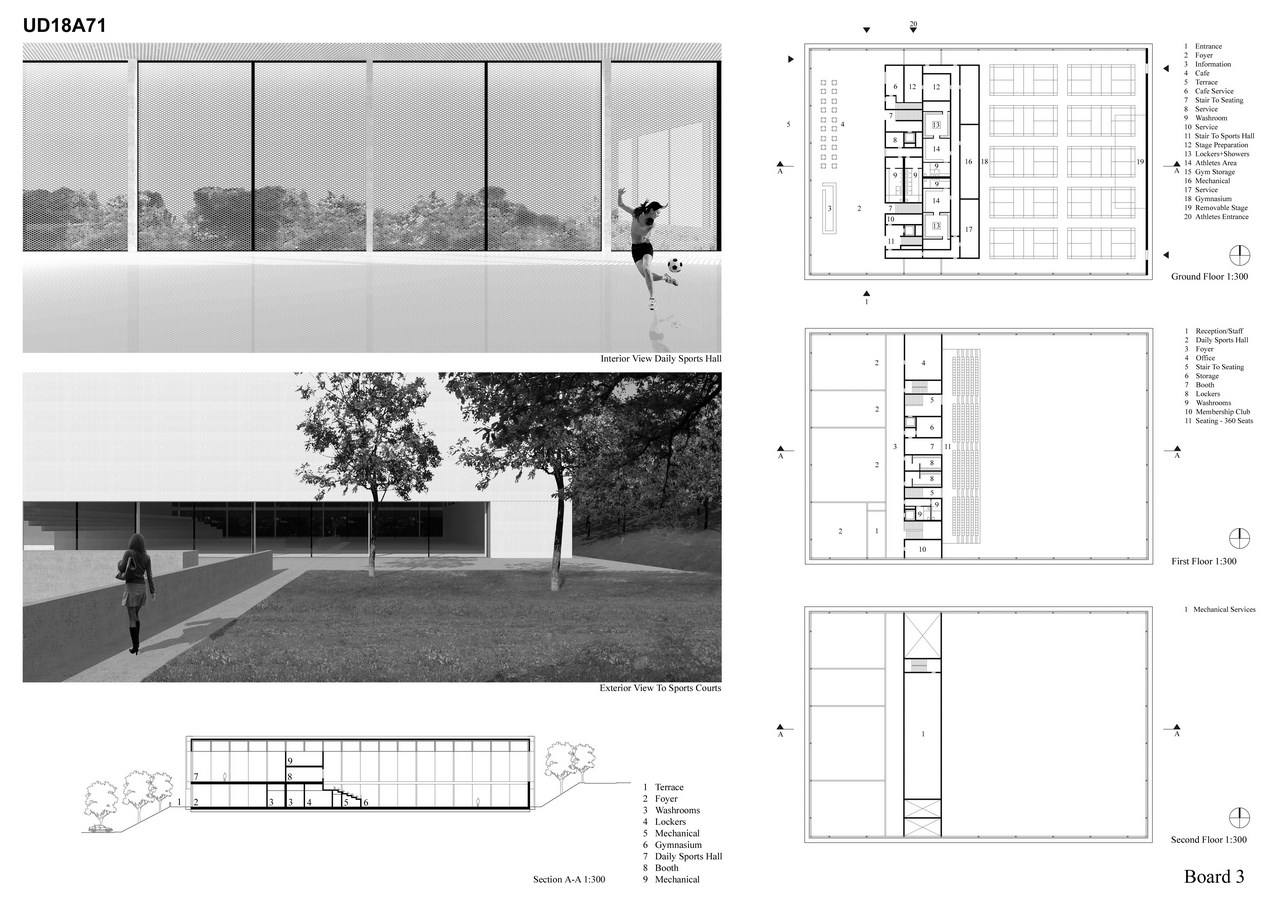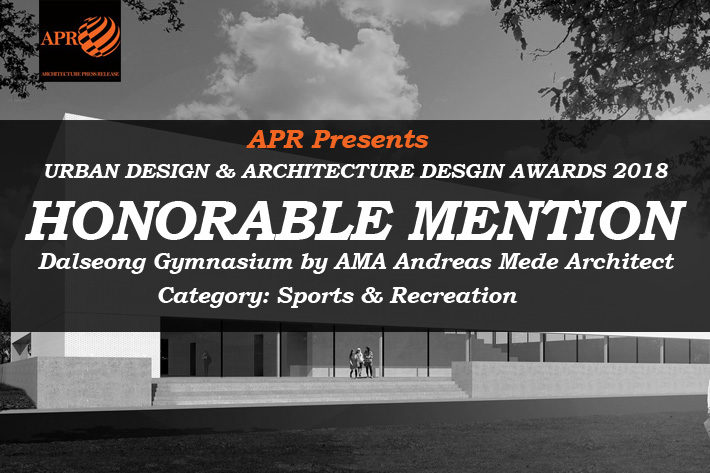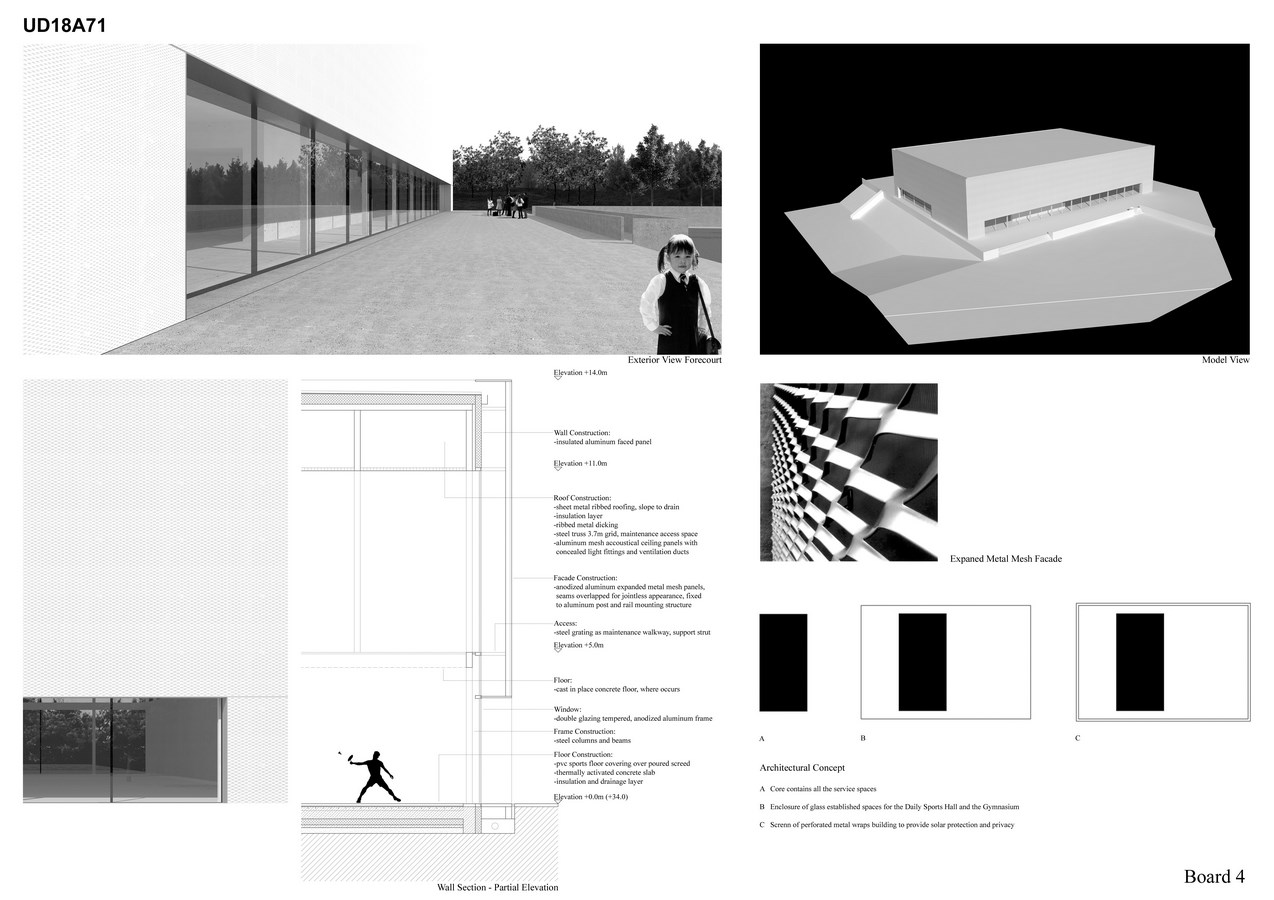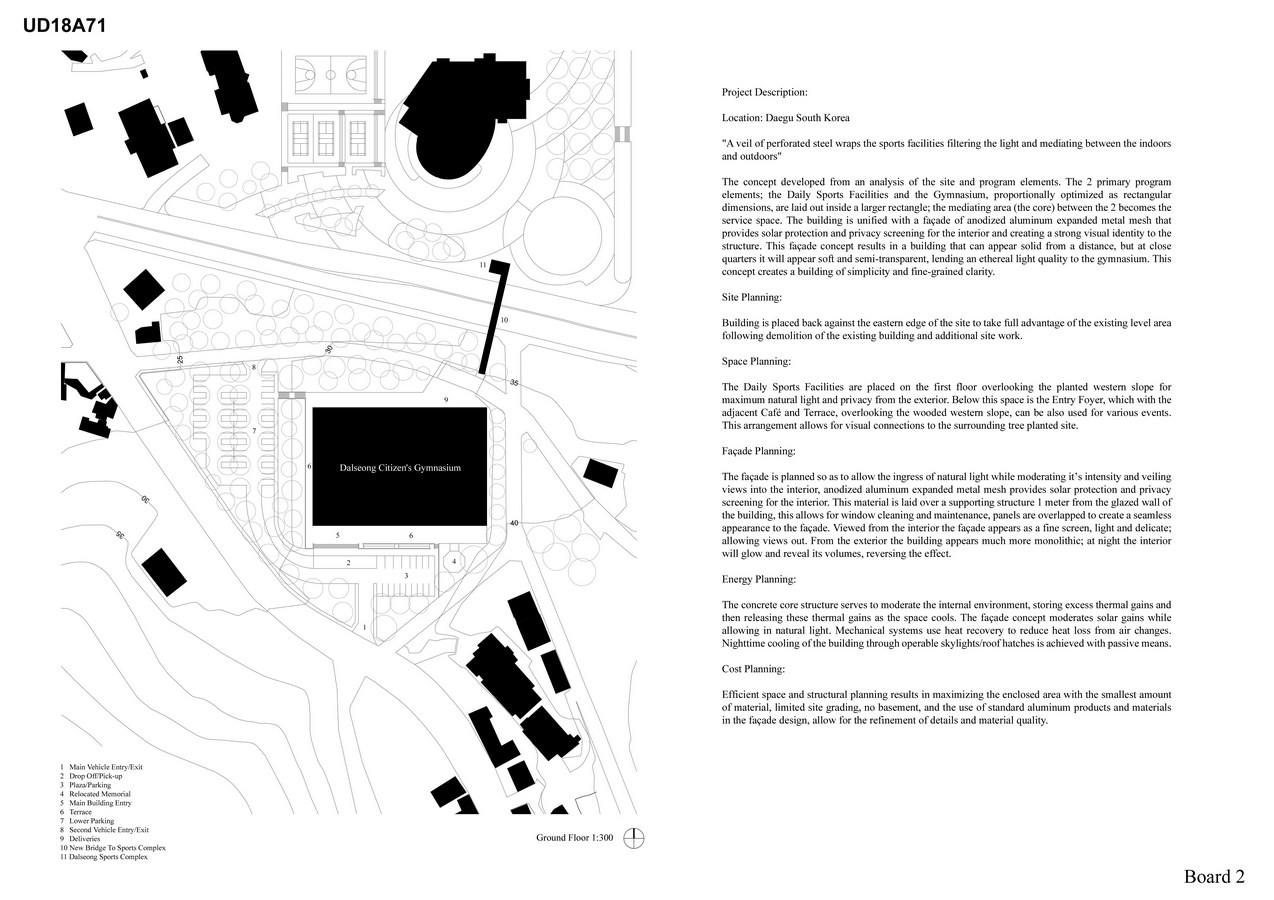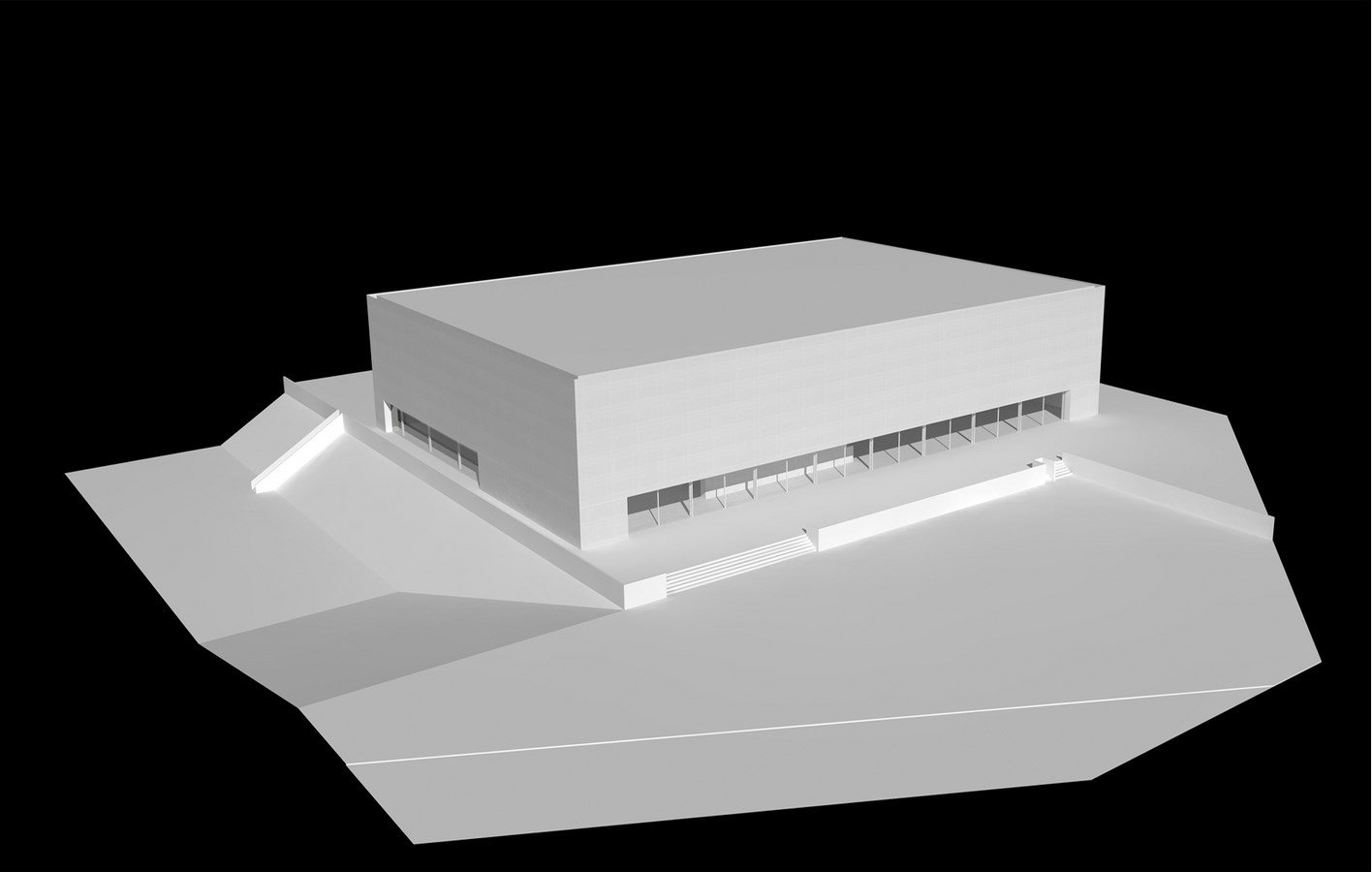“A veil of perforated steel wraps the sports facilities filtering the light and mediating between the indoors and outdoors”
Urban Design & Architecture Design Awards 2018
Honorable Mention | Category: Sports & Recreation
Architects: Andreas Mede
Studio: AMA Andreas Mede Architect
Country: United States
Website: www.am-a.net
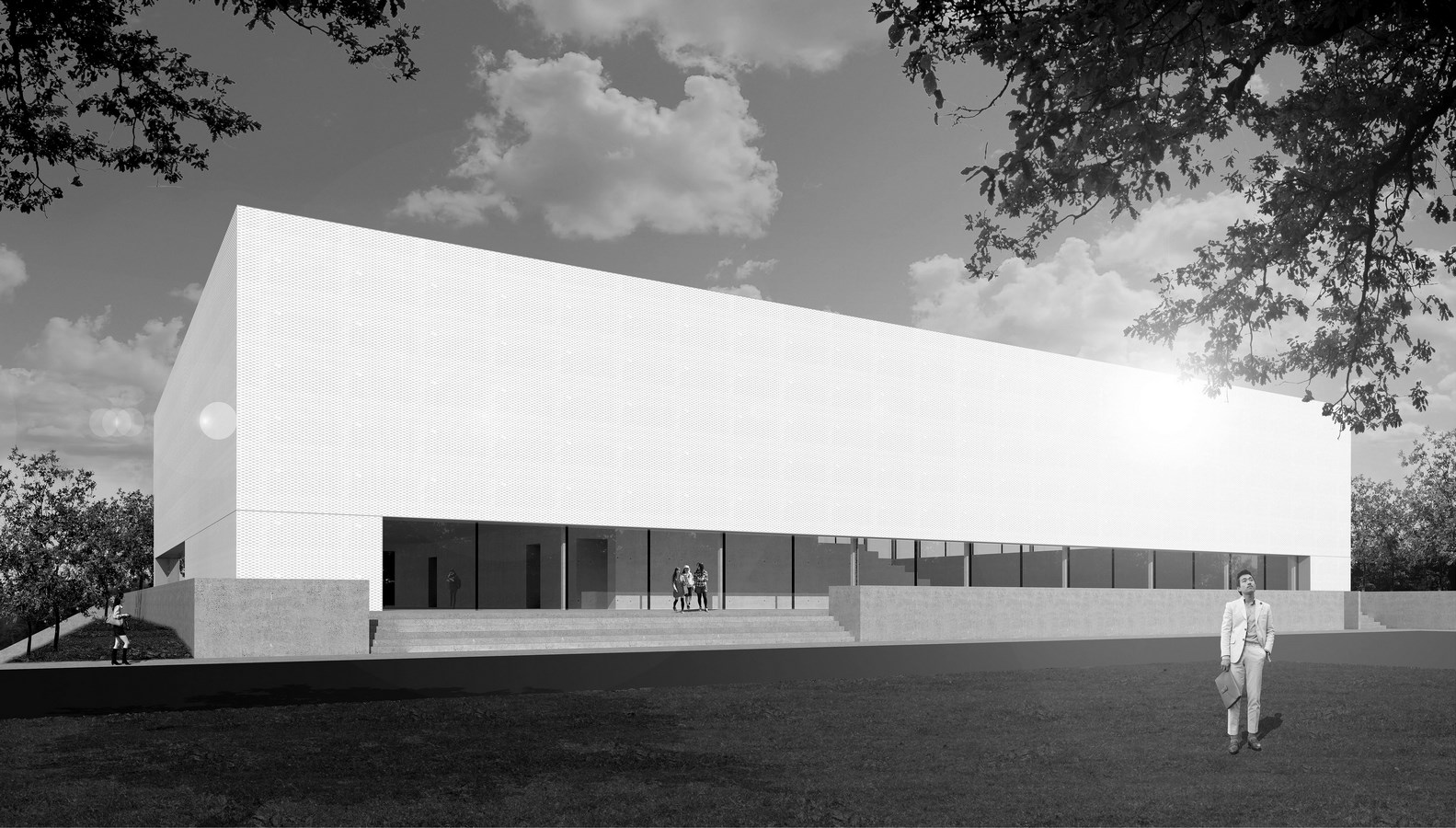
The concept developed from an analysis of the site and program elements. The 2 primary program elements; the Daily Sports Facilities and the Gymnasium, proportionally optimized as rectangular dimensions, are laid out inside a larger rectangle; the mediating area (the core) between the 2 becomes the service space. The building is unified with a façade of anodized aluminum expanded metal mesh that provides solar protection and privacy screening for the interior and creating a strong visual identity to the structure. This façade concept results in a building that can appear solid from a distance, but at close quarters it will appear soft and semi-transparent, lending an ethereal light quality to the gymnasium. This concept creates a building of simplicity and fine-grained clarity.
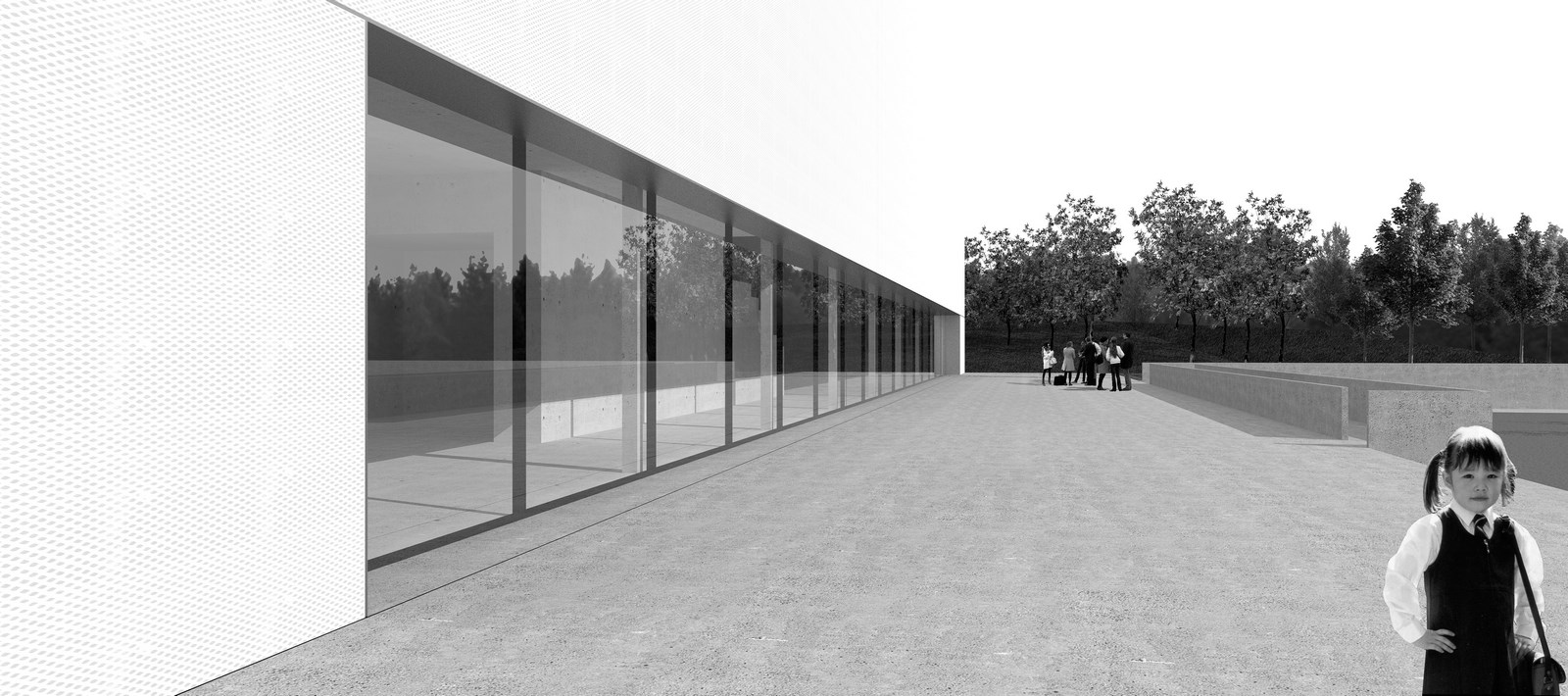
Site Planning: Building is placed back against the eastern edge of the site to take full advantage of the existing level area following demolition of the existing building and additional site work.
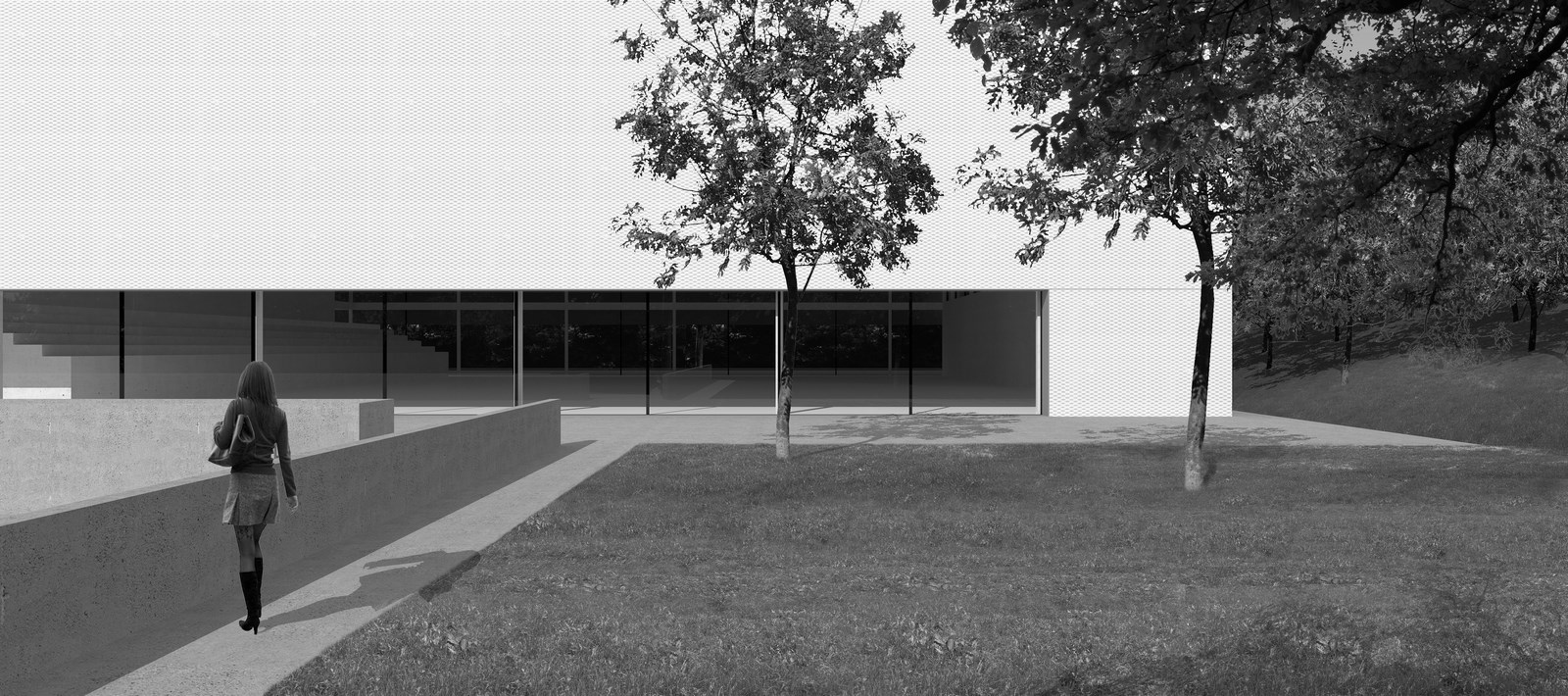
Space Planning: The Daily Sports Facilities are placed on the first floor overlooking the planted western slope for maximum natural light and privacy from the exterior. Below this space is the Entry Foyer, which with the adjacent Café and Terrace, overlooking the wooded western slope, can be also used for various events. This arrangement allows for visual connections to the surrounding tree planted site.
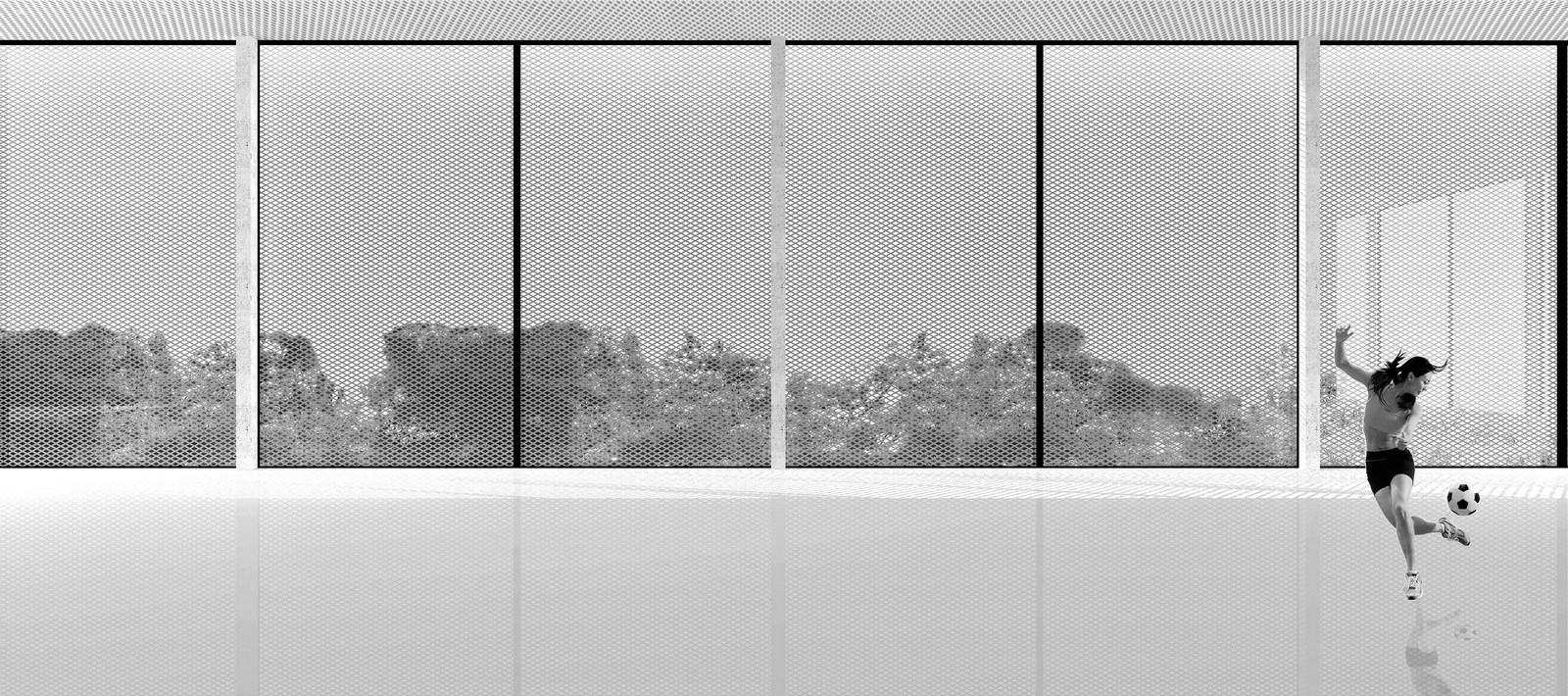
Façade Planning: The façade is planned so as to allow the ingress of natural light while moderating it’s intensity and veiling views into the interior, anodized aluminum expanded metal mesh provides solar protection and privacy screening for the interior. This material is laid over a supporting structure 1 meter from the glazed wall of the building, this allows for window cleaning and maintenance, panels are overlapped to create a seamless appearance to the façade. Viewed from the interior the façade appears as a fine screen, light and delicate; allowing views out. From the exterior the building appears much more monolithic; at night the interior will glow and reveal its volumes, reversing the effect.
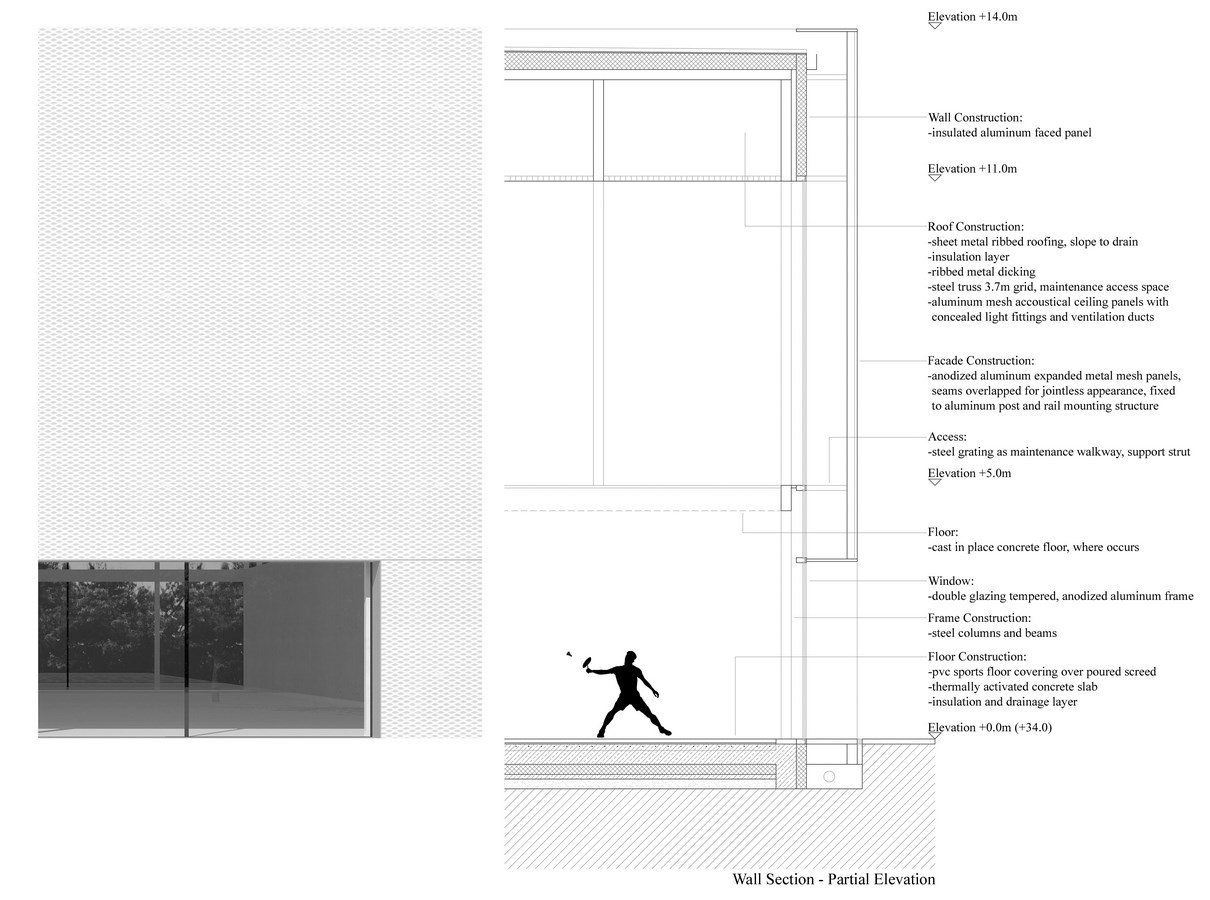
Energy Planning: The concrete core structure serves to moderate the internal environment, storing excess thermal gains and then releasing these thermal gains as the space cools. The façade concept moderates solar gains while allowing in natural light. Mechanical systems use heat recovery to reduce heat loss from air changes. Nighttime cooling of the building through operable skylights/roof hatches is achieved with passive means.

Cost Planning: Efficient space and structural planning results in maximizing the enclosed area with the smallest amount of material, limited site grading, no basement, and the use of standard aluminum products and materials in the façade design, allow for the refinement of details and material quality.
